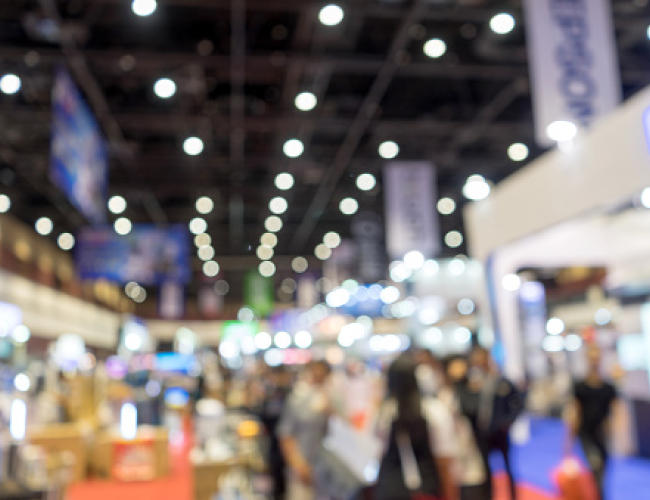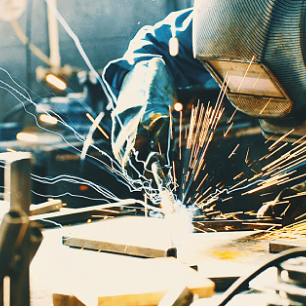Jump to:
Understanding the Ins and Outs of GMAW Consumables
Gas metal arc welding (GMAW) is typically seen as a very user-friendly welding process to learn and one of the most versatile processes. It can be administered across a wide range of metals, applications, and industries, making it effective and efficient.
GMAW is unique compared to processes like gas tungsten arc or shielded metal arc welding because it requires a solid-wire electrode that is continuously heated and fed to the weld pool from a welding gun. It also requires using a shielding gas to maintain a stable arc and protect the weld pool from contaminants that can negatively impact the quality of the weld.
While having a good gun is essential, the right consumables are the real heavy lifters in GMAW. Understanding how consumables need to work in concert with one another and choosing the right consumables for the job is essential for achieving overall welding success. The different components and how they can impact the welding process can make or break the quality of the weld are integral considerations every welder should know and implement on the job.
The Importance of Nozzles and Shielding Gases
Nozzles — the essential component that directs the flow of shielding gas around the weld pool — come in different styles and materials, all of which can directly impact the outcome of the weld. From a size and style perspective, a good approach to keep in mind is to use the largest nozzle possible that allows access to the weld joint. Maximizing the nozzle size against access to the weld will help ensure that the appropriate amount of shielding gas flows over the weld. Straight, tapered, and bottleneck nozzles differ in diameter, weld access, and ability to withstand certain amperages, necessitating correctly matching the nozzle to the application.
Another consideration is the nozzle material. If the nozzle gets too hot, it can melt and potentially contaminate the weld pool. Brass is a good choice for applications around 300 A or lower because it does a good job of resisting spatter. For applications 300 A or more and requiring longer arc-on times, switching to a copper nozzle is ideal. Copper will hold up well to the heat and won’t melt if it gets too hot.
Choosing the right nozzle to disperse the shielding gas is important because shielding gas serves several essential functions during the welding process, including the following:
- Protecting the weld from the contamination of gases (i.e., oxygen, nitrogen, and hydrogen) and other debris
- Promoting arc stability for consistent welds
- Controlling joint penetration
- Enhancing the mechanical properties of the weld
- Reducing spatter and the need for postweld cleanup
That’s why considering what type of shielding gas will be used is imperative. An operator needs to factor in variables such as the type of material they’re welding, the welding application, any desired weld characteristics, and the welding position and then choose a gas that best aligns with those considerations. The most commonly used gases are 100% CO2 and an argon-CO2 mix, usually a 75-25% or 90-10% mix. Using the wrong gas or not having enough gas to cover the weld can lead to defects such as porosity, inclusions, cold cracking, and a weakened weld — all of which require time-consuming rework.
Diffuser Details
The diffuser helps evenly distribute shielding gas around the inside of the gas nozzle, further protecting the weld pool from contaminants and stabilizing the arc. The flow of shielding gas through the diffuser can also help cool the contact tip, reducing wear and prolonging the life of the consumable. The diffuser contains strategically placed holes designed to allow even gas distribution, making it essential that they stay clear and free of any buildup.
The Role Contact Tips Play
A contact tip does more than guide the welding wire as it exits the gun. It also transfers electrical current from the gun to the wire, which melts the wire and forms the weld pool. A good contact tip and sound connection to the diffuser provide consistent electrical contact with the wire to maintain a stable arc.
Contact tips are typically manufactured from materials with good electrical conductivity, making copper a popular choice and suitable for most gas metal arc applications. Copper helps prevent overheating and is durable under an array of conditions. Chrome zirconium tips are used in more demanding welding applications, and HDP contact tips are ideal for automated pulse welding applications.
For the best results, contact tips need to match the diameter of the welding wire being used and meet the required conditions to effectively weld the workpiece (e.g., amperage and duty cycle). Tips that are too large for the wire will cause the wire to drift, and the arc can become unstable. If the tips are too small, there will be too much friction, which will result in feeding issues. Tips that can’t withstand the amperage or duty cycle can lead to premature contact tip failure and issues such as burnback, keyholing, or erosion.
Focus on Liners
The liner is the conduit for the welding wire to get from the feeder to the weld, making it a crucial element during the welding process and directly impacting the quality and efficiency of the weld. A smooth and consistent wire feed is needed to achieve a stable welding arc and uniform output. Choosing the right liner will depend on factors such as welding wire diameter, the type of material being welded, and the specific GMAW setup.
Liners are an essential component of the welding process, and investing in a higher-quality liner will help produce better results. A quality liner is manufactured with higher-end materials and is consistently checked to ensure it meets key specifications. Inconsistencies and deviations can impact how smoothly the wire passes through the torch and accelerate the rate at which the liner wears out. Low-quality liners, although typically cheaper, tend to create more wire drag, which will hinder feeding performance, consumable life, and overall weld quality
Because the liner is so integral to the welding process, many times an issue with the weld can be traced back to the liner or its setup. If you’re constantly experiencing poor wire feeding, bird-nesting, erratic arcs, or burnbacks, troubleshooting whether the liner is cut to the correct length is a good first step. If the liner is too long or short, it will diminish weld quality.
Consumable systems that eliminate liner trim-length errors exist. Such a system allows operators to cut the liner flush with the back of the power pin so that it is locked and aligned at the front and rear of the gun to provide a clear wire feed path. Upgrading to a system like this can help optimize productivity by reducing time spent troubleshooting and the need for frequent tip changes.
Reviewing Wire Selections
Gas metal arc welding won’t happen without a filler metal, and using the wrong wire can result in cracking, corrosion, and many other weld defects. That’s why choosing the right wire is necessary for laying a quality weld and minimizing postwelding cleanup and rework.
Welding wires are classified based on their characteristics and usability, providing much-needed information to welders about the allowable welding positions, tensile strength, shielding gas requirements, and overall composition. The right filler metal is mechanically and chemically acceptable for the workpiece, making the chemistry between the base metal and filler metal one of the most vital components to remember. This ensures the weld deposit has the same properties as the base metal. If the chemistry is off, welders face increased risks of cracking, corrosion, and other weld defects.
In addition to the range of filler metal types, there’s a range in quality. Using a low-quality wire, even if it’s appropriate for the job, can result in premature failure of contact tips, burnbacks, poor wire feedability, excess spatter, and/or an overall poor weld. Encountering those types of quality issues requires cleanup and rework. Original equipment manufacturer consumables have been rigorously tested to guarantee they meet the designated specifications and will perform as expected. Once you know the type of filler metal you need, selecting a premium option up front can save time on the job and most likely save money due to minimal downtime and increased efficiency.
Ending Thoughts
Consumables are essential for GMAW, with the different components coming together to bring the welding process to life. While the right choices will truly depend on the unique characteristics of the job, knowing what’s available and how different variations can impact the quality of the work will help operators make the right selections each time.
This article was written by Andy Monk (product manager –consumables, Bernard) for the American Welding Society.


